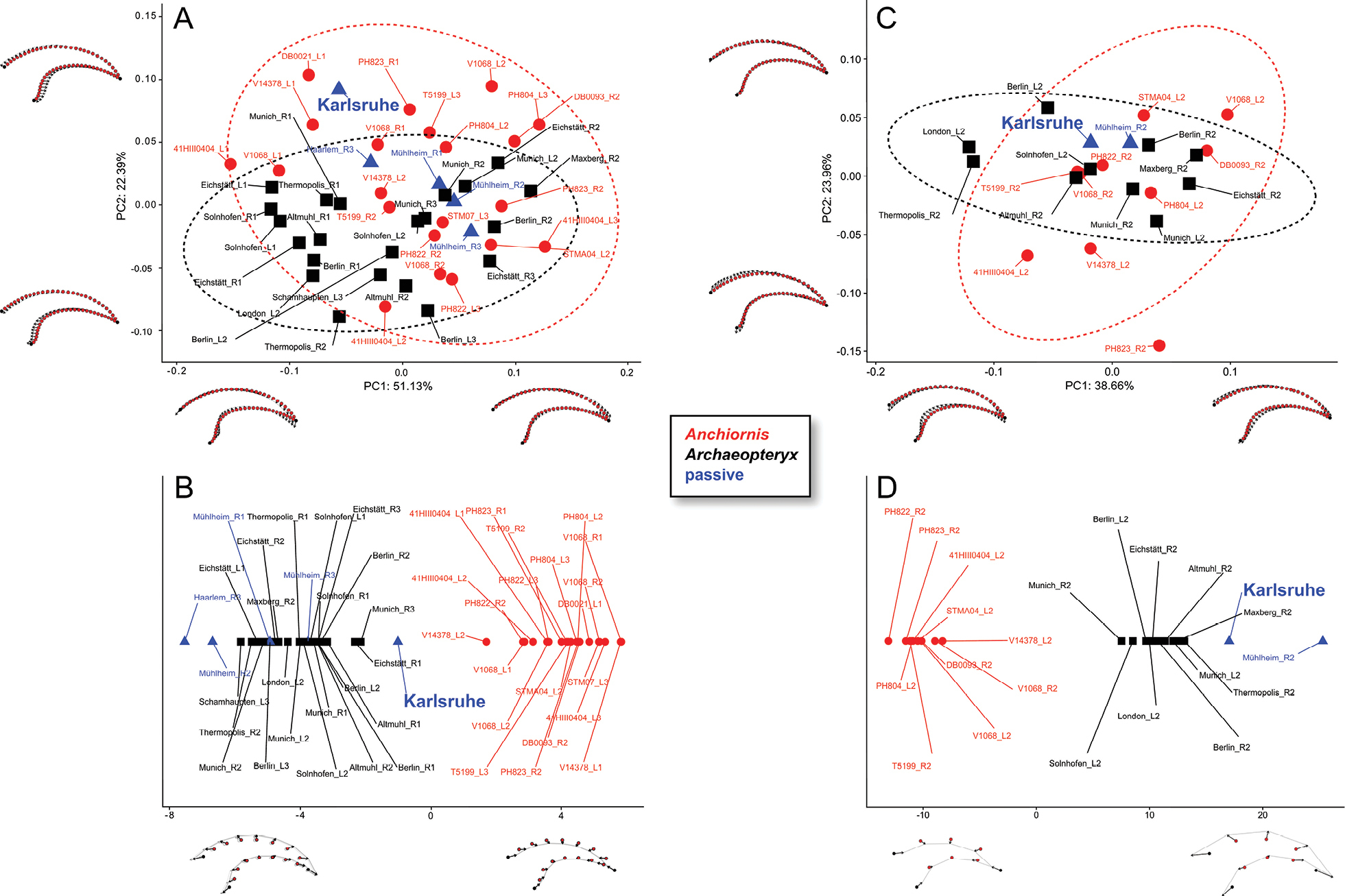
|
||
|
Geometric Morphometric Analysis for manual unguals of Urvögel (Archaeopteryx and passive) and Anchiornis specimens. A. Principal Component Analysis (PCA); PC1 primarily corresponds to curvature, position of the proximal base of the dorsal curvature and curvature of the flexor tubercle; PC2 primarily corresponds to dorsoventral height and proximodistal position of the flexor tubercle; B. Canonical Discriminant Analysis (CDA) discriminating between the manual unguals of Anchiornis and Archaeopteryx. C. PCA for manual unguals from only digit II; PC1 primarily corresponds to curvature of the flexor tubercle; PC2 primarily corresponds to dorsoventral height. D. CDA discriminating between the manual unguals from only digit II of Anchiornis and Archaeopteryx; the reduced number of semi-landmarks is due to smaller sample sizes. The “passive” group was included in the analysis passively, such that their morphology does not influence the discrimination; as such, they will also cluster more loosely with either group. Each of the passive specimens (Karlsruhe, Haarlem and Mühlheim) show greater taxonomic affinities for Archaeopteryx than for Anchiornis. Thin-plate splines are used to illustrate the morphology at each extreme end of each axis. Black dots represent landmarks and red dots represent semi-landmarks. |